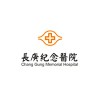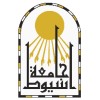
Safety and Optimal Neuroprotection of neu2000 in Ischemic Stroke With Endovascular reCanalizion...
Ischemic StrokeEfficacy and safety of Neu2000, a multi-target drug designed to prevent both NMDA receptor-mediated excitotoxicity and free radical toxicity, will be investigated in acute ischemic stroke patients receiving endovascular treatment to remove clot within 8 hours following stroke onset. Neu2000KWL will be administered before endovascular treatment.

The Fluid Therapy Strategy of the Non-dehydrated Patients With Acute Ischemic Stroke.
StrokeDehydrationThe investigators previously found that a blood urea nitrogen/creatinine (BUN/Cr) ratio >15 is an independent predictor of early deterioration after acute ischemic stroke. Another study was conducted to determine whether urine specific gravity, another indicator of hydration status and one more easily obtained, is also an independent predictor of early deterioration or stroke-in-evolution (SIE) in such patients. The investigators also conducted a preliminary study, enrolling ischemic stroke patients with a BUN/Cr ratio >15 and find daily Bun/Cr based hydration help to decrease post stroke infection rate and improve 3 months functional outcome. In this study, daily urine specific gravity will be used to adjust hydration therapy in ischemic stroke patients with initial Bun/Cr ratio <15. The primary outcome is the post stroke infection rate in the first 7 days after admission, and secondary outcome is 3 months functional outcome using mRS.

Eccentric Contraction-based Resistance Exercise for Chronic Stroke Patients
StrokeThe purpose of this study is to develop an evidence-based rehabilitation treatment method suitable for recovery and improvement of physical function in chronic stroke patients using an eccentric overload flywheel device. Participants are disabled with chronic stroke (ischemic and hemorrhagic cerebral hemorrhage) over 50 years of age, who can communicate with a Korean simple mental state test (MMSE-K) of 24 points or higher, and whose functional gait score is 3-5 points. The investigators will enroll 40 participants and randomly assign them to either the control (Con, n=20) or the exercise (Ex, n=20) group. The investigators will verify the effectiveness of the exercise program through the evaluation of changes in muscle and physical function before and after intervention in both groups.

Effect of Zoledronic Acid on Prevention of Bone Loss in Acute Phase First-ever Stroke Patients
StrokeIn order to reduce the incidence of fractures due to osteopenia, osteoporosis, and bone mineral density in first stroke patients, the purpose of this study was to determine whether it is meaningful to administer zoledronic acid prophylactically, and to define the characteristics of the patient group that can benefit. Subjects suitable for the selection criteria are divided into an experimental group (zoledronic acid group) and a control group (physiological saline group) in random permuted blocks. Random assignment means that a coin is thrown and assigned to the experimental group or the control group with the probability of a head or tail, and is assigned using a random number table. The comparison-control group was designed to analyze and compare whether there is a significant effect of preventing the decrease in bone density in the group administered zoledronic acid through the double-blind experimental group and the control group. The reason why physiological saline was selected as a reference drug was to double-blind with zoledronic acid, because it does not affect the subject's bone density and has a very low possibility of side effects, and its transparent properties are similar to that of zoledronic acid. Subjects undergo a bone density (BMD-Spine and femur, Whole Body Composition Assessment) test using DEXA (dual energy x-ray absorptiometry) through outpatient or hospitalization at the Department of Rehabilitation within one month after the onset of stroke. Subsequently, the subject will receive a single infusion of zoledronic acid 5mg/100mL or physiological saline 100mL intravenously at the outpatient or inpatient ward depending on the group. Subsequently, the subject will receive a single infusion of zoledronic acid 5mg/100mL or physiological saline 100mL intravenously at the outpatient or inpatient ward depending on the group. Each subject or guardian fills in the questionnaire form at the time of the first injection, 6 months and 12 months after the injection, and immediately sees the fractures, side effects, and changes in drugs taken from the last survey to the present. At the first injection, 6 months and 12 months after the injection, the above examination (bone density) is performed through an outpatient department of rehabilitation medicine, and by type known to be related to zoledronic acid administration such as fractures during the period (primary fragile fracture, non-spine fragile fracture, Symptom fracture, spine fracture, etc.)

Augmenting the Effects of Mirror Therapy for Stroke Rehabilitation by tDCS
Cerebrovascular AccidentThis project is to evaluate and compare the impact of tDCS stimulation location on augmenting MT effects.

Effects of Orofacial Myofunctional Therapy on Mental Functioning and Overall Self-Sufficiency in...
StrokeThis project will explore the effects of orofacial myofunctional therapy on mental functioning and overall self-sufficiency in stroke patients. The population sample will be 70 divided randomly into two groups by concealed envelop method. Then i will collect data from Physiotherapy department Wapda Hospital complex, Lahore. Group A will be treated with routine physical therapy treatment that will include EMS, Infrared and Intermittent stretching of facial muscles for 36 sessions on alternate days, each session comprise 30 minutes . Group B will receive routine physical therapy along with orofacial therapy (36 sessions on alternate days, each session comprise 45 minutes) .

Intracranial Rescue Stenting for Acute Ischemic Stroke, Predictors of Outcomes
Ischemic StrokeThromboembolic StrokeThe use of rescue intracranial stenting is thought to be associated with better outcomes than with patients received medical treatment only after failed thrombectomy as Reperfusion technique. This raised the questions about the factors that affect outcomes of rescue intracranial stenting angioplasty, so the best outcomes can be achieved.

Edaravone Dexborneol for Treatment of Acute Ischemic Stroke With Endovascular Therapy in Extended...
StrokeIschemicTo explore the safety and efficacy of edaravone dexborneol for patients of acute ischemic stroke received endovascular therapy in extended time windows.

Effects of PlayStation®VR on the HRQOL in Stroke Patients Undergoing Inpatient Rehabilitation
StrokeCompared to conventional rehabilitation therapy, the full-immersive commercial game (CG) system, in the form of available video game, could safely provide more positive effect on health-related quality of life (HRQOL) and motor function in post-stroke patients. The study aims to perform the research from 2019/7/1 to 2021/6/30 and enrolls a total of 80 participants. Stroke participants are recruited from the rehabilitation ward of CGMH hospital. The inclusion criteria are (a) first-time unilateral cerebral stroke, (b) stroke onset less or equal to 1 year, (c) admission to the rehabilitation ward, (d) ages 20-80 years, (e) spasticity of paretic arm ≤ grade 2 in the Modified Ashworth Scale, and (f) no active medical problems such as fever, pneumonia, or scabies. The exclusion criteria are (a) brainstem or cerebellar stroke, (b) epilepsy history, including photosensitive epilepsy, (c) previous or active heart diseases, such as myocardial infarction or angina, (d) visuospatial problems related to stroke, such as hemianopia or hemineglect, (e) paretic upper limb reaches Brunnstrom recovery stage VI, (f) severe aphasia, (g) severe cognitive impairment, and (h) poor cooperation with assessments. All participants are randomly allocated to study group and control group. Participants in the control group receive conventional rehabilitation therapy over 50 minutes on weekdays. Participants in the study group receive conventional rehabilitation therapy over 50 minutes on weekdays and 7 sessions (flexible schedule in different day) of PlayStation®VR of 20 minutes each in the main 16-day study period. Pre-intervention, post-intervention, and 3-month follow-up HRQOL will be assessed by the Stroke Impact Scale 3.0. Motricity Index and Fugl-Meyer Assessment, Functional Independence Measure, and arm movement ratio will also be checked before intervention, after intervention, and at 3-month follow-up. The safety outcome, intervention-related adverse events or any serious adverse events, during study period will be recorded.

Treadmill With Biofeedback on Gait Symmetry After Stroke
Stroke SyndromeThis study aims to investigate the immediate, accumulated, and maintainable effects of treadmill with biofeedback on gait symmetry in individuals with chronic stroke.
